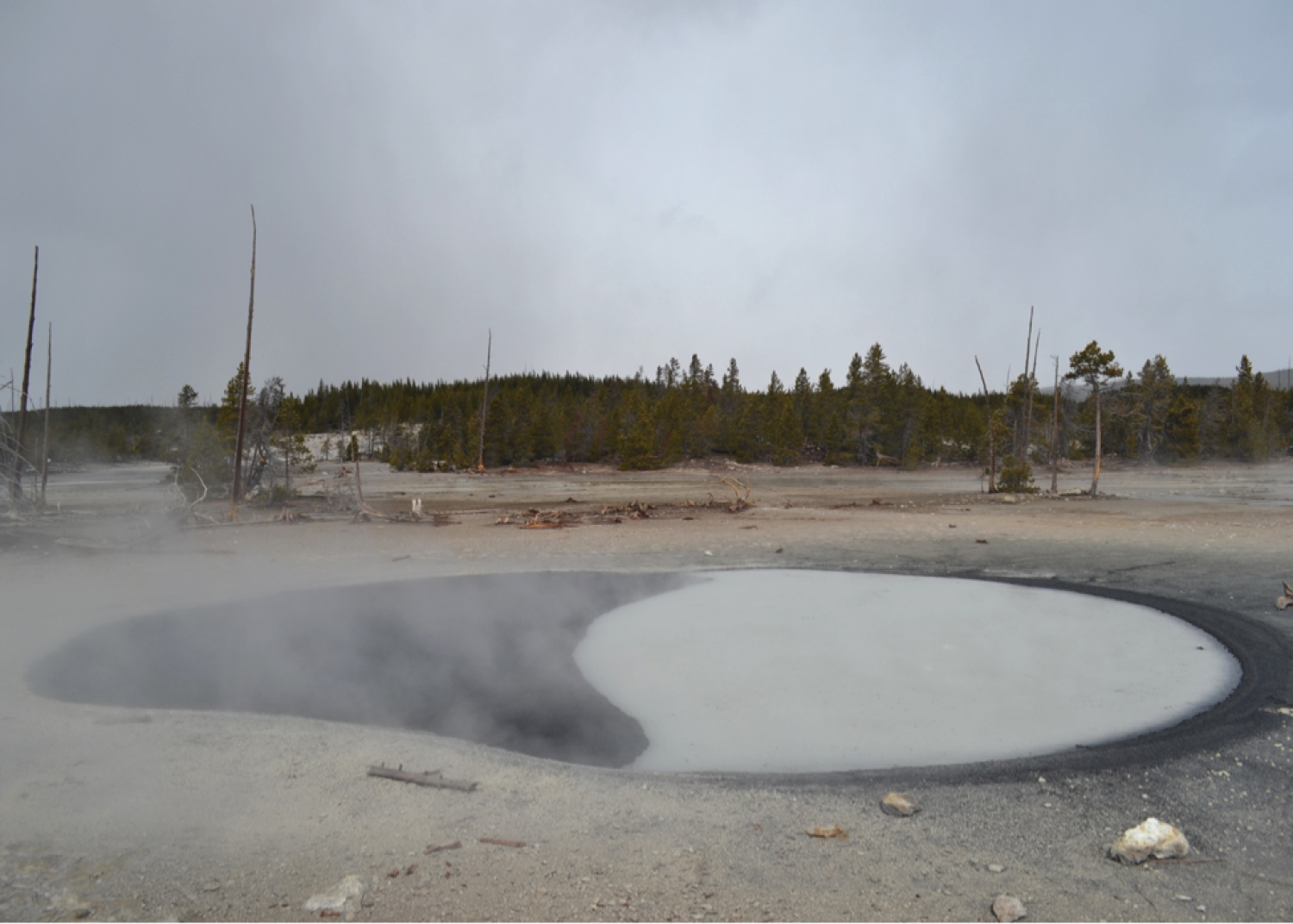Yellowstone National Park
Yellowstone National Park hosts >14,000 geothermal springs that each exhibit unique geochemical compositions that span orders of magnitude variations in temperature (ambient to 93C), pH (pH <1 to >10), and concentrations of redox sensitive compounds and metals. Variation in the composition of geothermal features is due to a combination of surface and subsurface inputs, including subsurface boiling and phase separation, water-rock interactions, and dilution of hydrothermal fluids with meteoric water in near surface environments. Temporal variation in the extent of hydrothermal input, as well as variation in meteoric input drive temporal dynamics in hot environments. The spatially and temporally dynamic hot springs in YNP therefore provide a useful system for investigating the influence of geochemical variation on the diversification of extremophilic microorganisms, their activities, and biosignature generation and preservation. Furthermore, the study of these early earth analog environments provides new perspective on the role of water rock interactions in sustaining life on early earth.

RPL investigations in YNP hot spring environments in 2016 centered on questions relating to the array of energy and carbon sources available to chemosynthetic life, defining the influence of surface and subsurface processes in influencing the activities and composition of hot spring life, and the role of temporal variation in the distribution and abundance of microbial life. Samples of hot spring waters and sediments were collected weekly from four hot springs over the course of a four month period. Chemical and biological analysis of these samples will permit a greater understanding of how temporal dynamics influence the geochemical and microbial composition of hot spring communities. Samples were also collected to examine the relative influence of surface and subsurface processes on the composition and activities of hot spring communities for use in defining and investigating the endemic subsurface hydrothermal biosphere in YNP. Through these studies we aim to better understand processes that most likely sustained microbial life on the early Earth. Since it is possible, if not likely, that such processes would also sustain early life on other planetary bodies, this research has the potential to guide the search for life in non-Earth environments.

